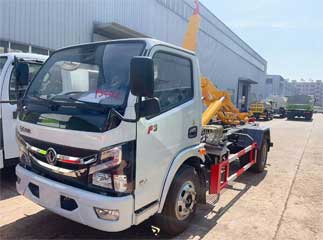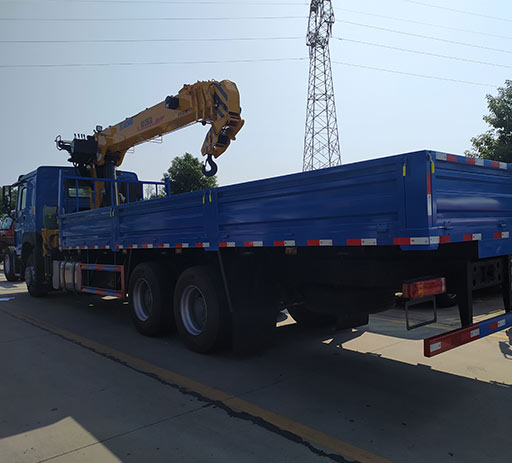Tandem Axle Truck for Sale: Everything You Need to Know
Are you in the market for a reliable tandem axle truck? These vehicles are essential for many businesses requiring heavy-duty transport and logistics solutions. In this article, we will provide comprehensive information about tandem axle trucks, including their benefits, various types available, purchasing tips, maintenance tips, and more. This guide will equip you with everything you need to make an informed decision.
What is a Tandem Axle Truck?
A tandem axle truck is a type of truck that features two axles located close together on a single chassis, enabling it to support more weight and provide better traction and stability on the road. This design makes them particularly suitable for transporting heavy loads over long distances.
The Advantages of Tandem Axle Trucks
1. Enhanced Load Capacity
Tandem axle trucks are designed to carry heavier loads compared to single axle trucks. With the increased number of wheels, the weight is distributed more evenly, thus enhancing the truck’s overall load capacity.
2. Improved Stability and Traction
These trucks provide better traction on various terrains. The additional axle helps maintain stability, especially when navigating steep inclines or uneven surfaces.
3. Better Braking Performance
A tandem axle configuration facilitates enhanced braking performance. The weight distribution allows the brakes to work more effectively, which is crucial when transporting heavy cargo.
Types of Tandem Axle Trucks
1. Flatbed Tandem Axle Trucks
These trucks feature a flat transport bed that allows for easy loading and unloading of goods. Ideal for transporting heavy equipment, building materials, and other bulk items, flatbed tandem axle trucks are versatile and practical for various industries.
2. Box Trucks
A box truck is a cargo truck with an enclosed cargo area. Tandem axle box trucks provide excellent protection for goods against weather and theft, making them suitable for transporting valuable products.
3. Dump Trucks
Tandem axle dump trucks are designed for transporting loose materials such as sand, gravel, and dirt. The ability to hold substantial weight makes them perfect for construction sites and landscaping projects.
How to Choose the Right Tandem Axle Truck
1. Assess Your Needs
Determine the primary purpose of the truck. Are you transporting heavy machinery, goods, or construction materials? Understanding your specific needs will help narrow down your options.
2. Consider the Load Capacity
Each truck has a specified gross vehicle weight rating (GVWR). Ensure that the truck you select accommodates the type of loads you plan to transport. Reference the table below for load capacities:
| Truck Type | Average Load Capacity |
|---|---|
| Flatbed | Up to 40,000 lbs |
| Box Truck | Up to 26,000 lbs |
| Dump Truck | Up to 50,000 lbs |
3. Evaluate Engine Performance
The engine’s power and efficiency are crucial for the truck’s performance. Consider a model with a robust engine to handle heavy loads and challenging driving conditions.
4. Fuel Economy
Fuel costs can significantly impact your business operations. Look for tandem axle trucks that offer optimal fuel efficiency to save on long-term expenses.
Where to Find Tandem Axle Trucks for Sale
1. Online Marketplaces
Websites like Craigslist, eBay Motors, and specialized truck sales websites offer a wide range of tandem axle trucks for sale. You can filter your search by price, location, and features to find the right match.
2. Dealerships
Visiting local truck dealerships can provide you with the opportunity to see the trucks in person. You can also take advantage of warranties and financing options available through dealerships.
3. Auctions

Many businesses liquidate their assets through auctions. These events can be great opportunities to purchase tandem axle trucks at competitive prices.
Tips for Purchasing a Tandem Axle Truck
1. Inspect Before You Buy
Always conduct a thorough inspection of the truck before making a purchase. Look for signs of wear and tear, rust, and other damage that might affect its performance.
2. Check Maintenance Records
Request the maintenance history of the truck to ensure it has been properly cared for. Well-maintained vehicles tend to have a longer lifespan.
3. Test Drive
Take the truck for a test drive to evaluate its handling and performance. Pay attention to how the engine responds, and assess the comfort of the cabin.
4. Compare Prices
It’s wise to compare prices from various sellers to ensure you are getting a fair deal. Don’t hesitate to negotiate the price based on your findings during inspection and comparison.
Maintenance Tips for Tandem Axle Trucks
1. Regular Inspections
Frequent inspections can help identify issues before they become major problems. Check the brakes, tires, and suspension regularly.
2. Change the Oil
Engine oil should be changed regularly to maintain optimal engine performance. Follow the manufacturer’s guidelines for oil change intervals.

3. Keep Tires in Check
Monitor tire pressure and tread depth. Uneven tire wear can affect traction and handling. Rotate the tires occasionally for even wear.
4. Brake Maintenance
Inspect the brakes regularly and replace the brake pads as needed. Proper brake maintenance is crucial for ensuring safety while driving heavy loads.

Environmental Impact of Tandem Axle Trucks
1. Emissions
Like all heavy-duty vehicles, tandem axle trucks contribute to greenhouse gas emissions. Consider newer models that meet stricter emissions regulations to reduce your environmental footprint.
2. Fuel Consumption
Fuel-efficient models not only save you money but also reduce emissions. Choosing trucks with advanced engine technology can contribute to a cleaner environment.
3. Eco-Friendly Maintenance Practices
Adopt eco-friendly maintenance practices, such as proper waste disposal and using biodegradable fluids. Keeping the truck in good condition ensures it operates efficiently with less environmental impact.
FAQs about Tandem Axle Trucks
1. What is the main function of a tandem axle truck?
The main function of a tandem axle truck is to transport heavy loads while providing stability and improved traction. Their design allows for a higher load capacity compared to single axle trucks.
2. How much weight can a tandem axle truck typically carry?
The weight capacity depends on the type of tandem axle truck, but they can usually carry between 26,000 to 50,000 pounds, based on their specific construction and design.
3. Are tandem axle trucks easier to handle than single axle trucks?
Yes, tandem axle trucks are generally easier to handle under heavy loads due to their enhanced stability and traction, especially when navigating challenging terrains.
4. What should I look for during a test drive?
During a test drive, pay attention to the truck’s responsiveness, comfort, and handling. Listen for unusual noises and observe how smoothly it accelerates and brakes.
5. How can I improve fuel efficiency in my tandem axle truck?
Regular maintenance, avoiding excessive idling, ensuring proper tire pressure, and reducing unnecessary weight can all contribute to enhancing fuel efficiency.
6. Can I use a tandem axle truck for personal use?
Yes, tandem axle trucks can be used for personal projects like hauling equipment, trailers, or even recreational vehicles. However, consider the truck’s size and your driving capabilities.
